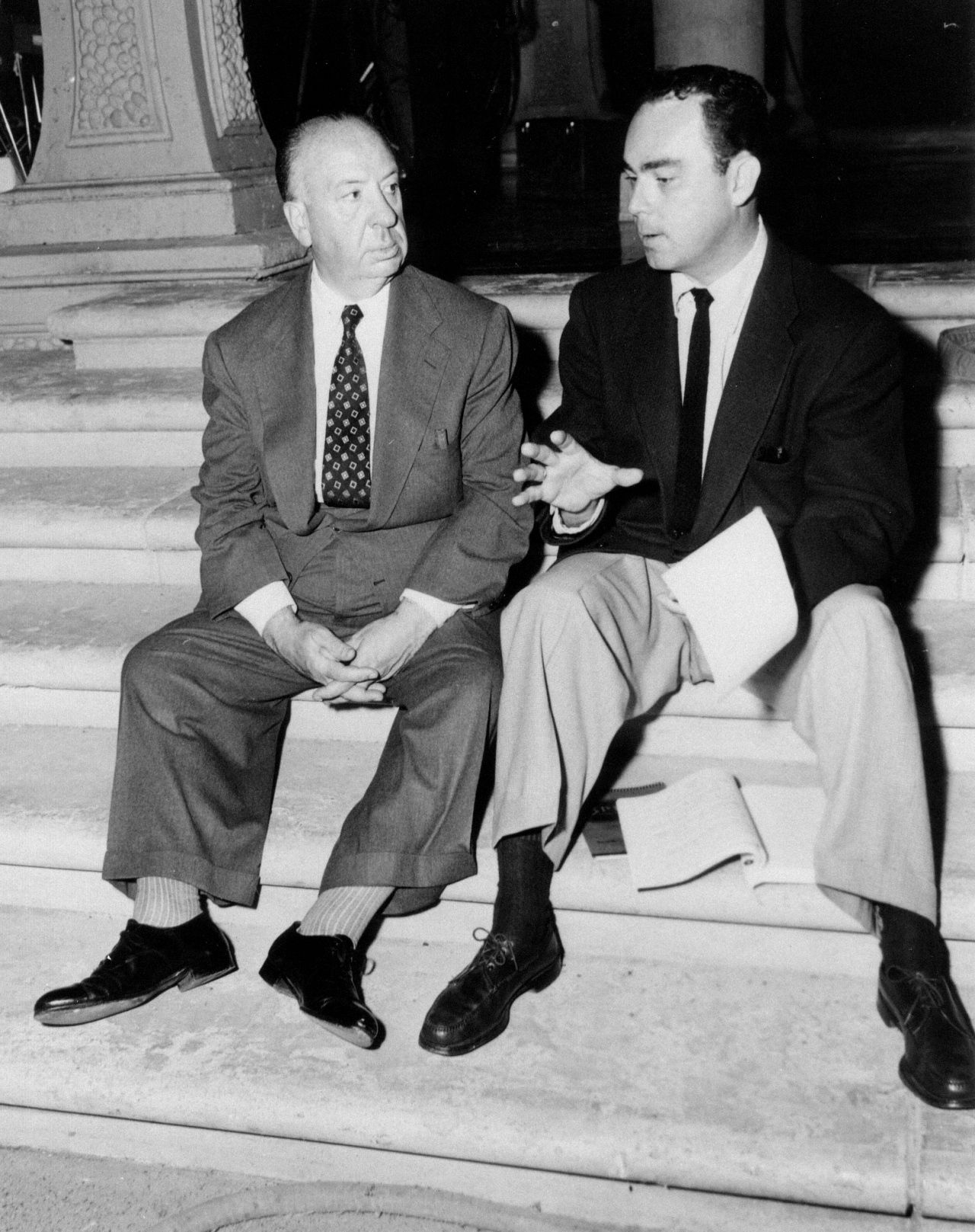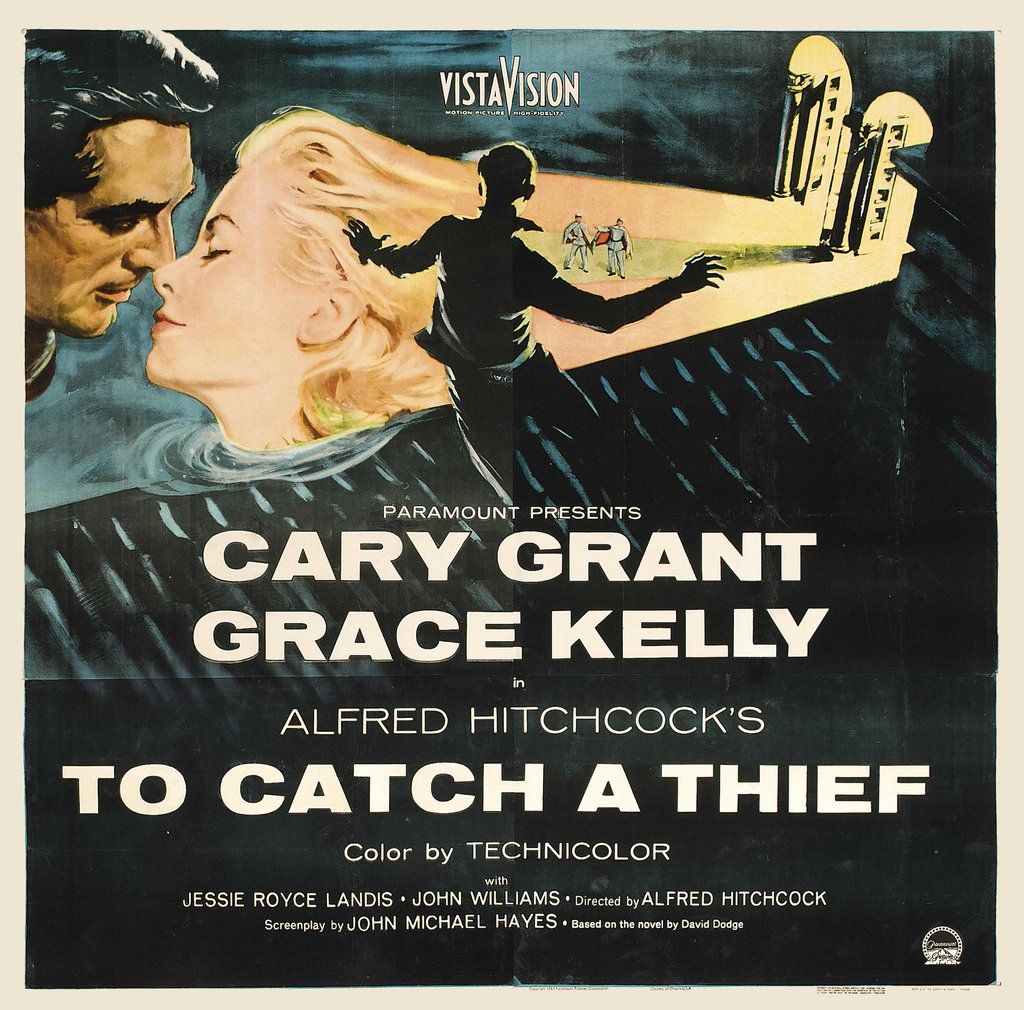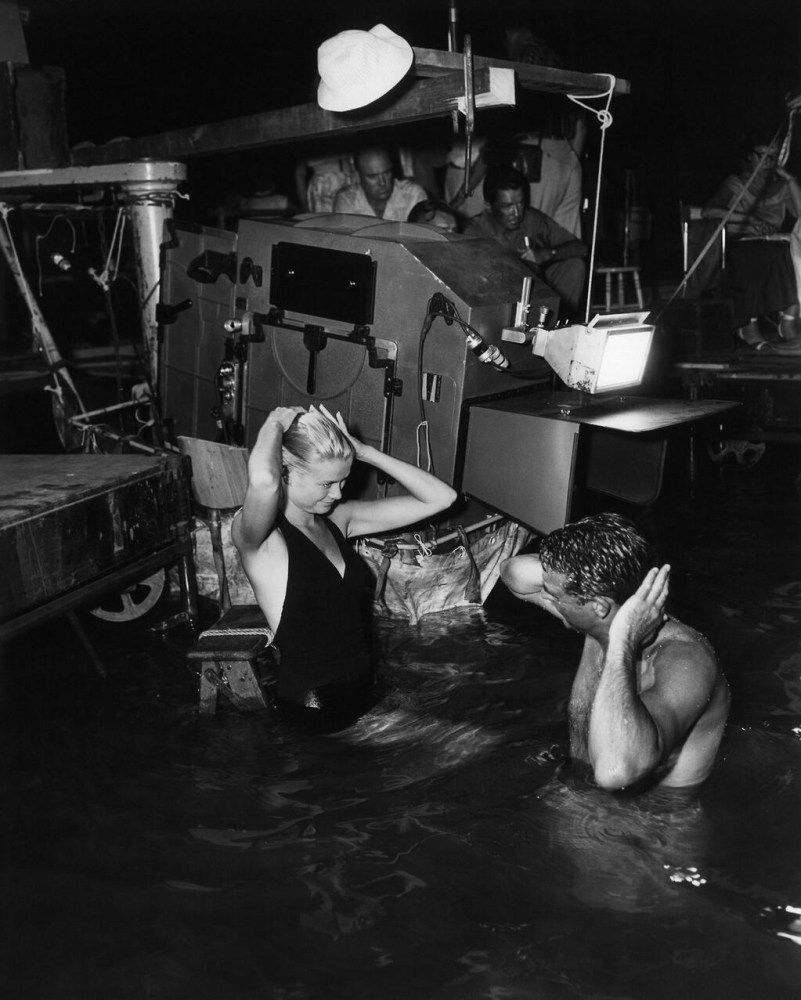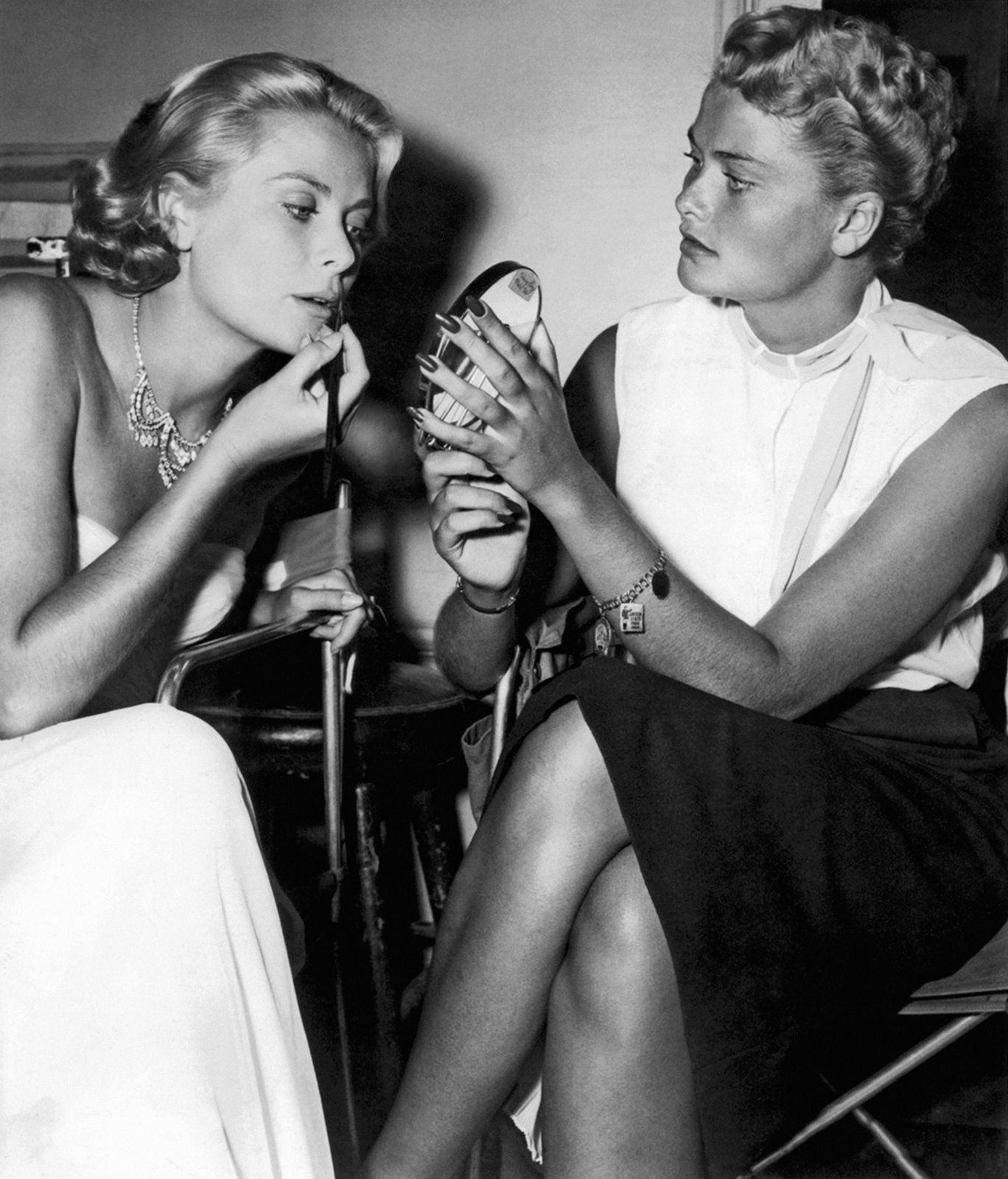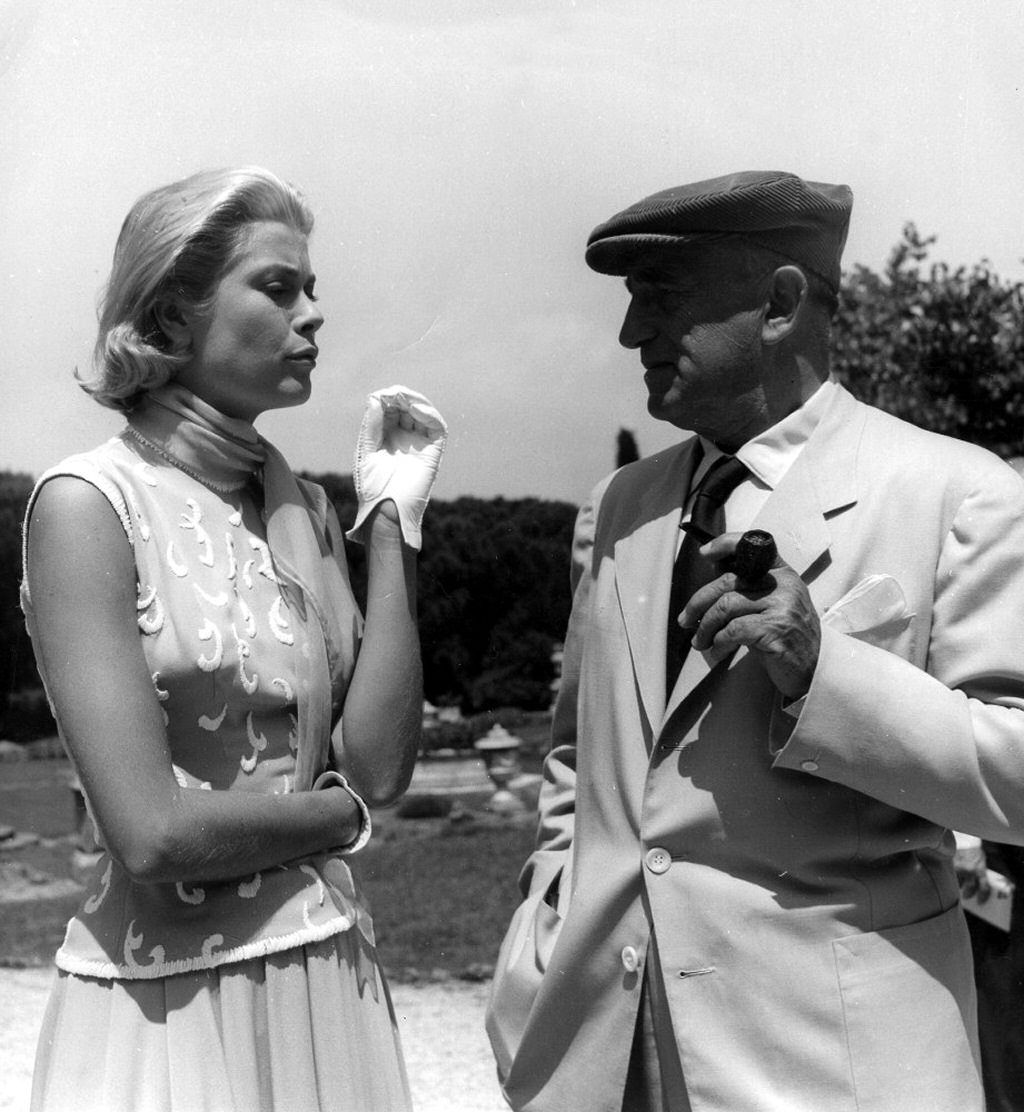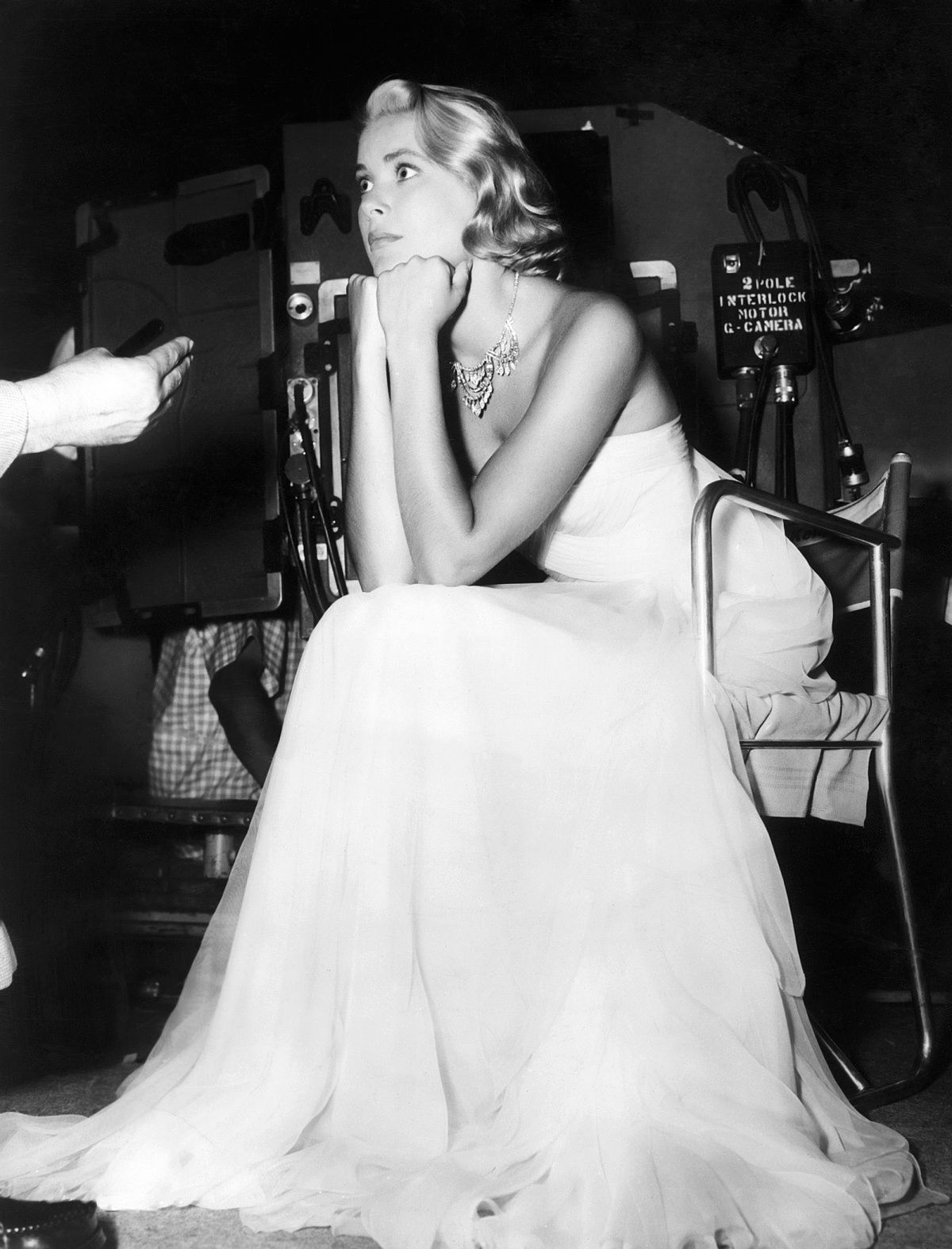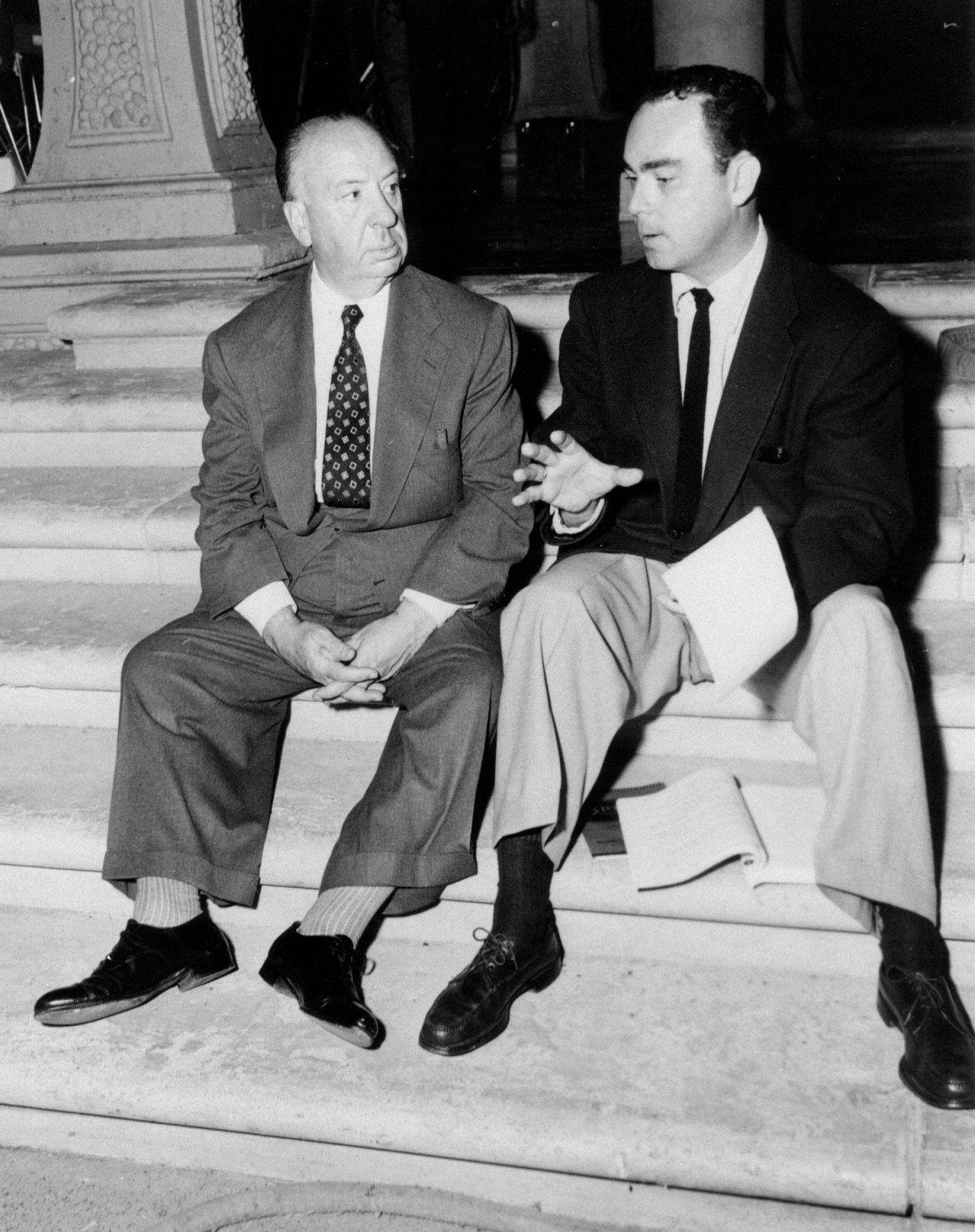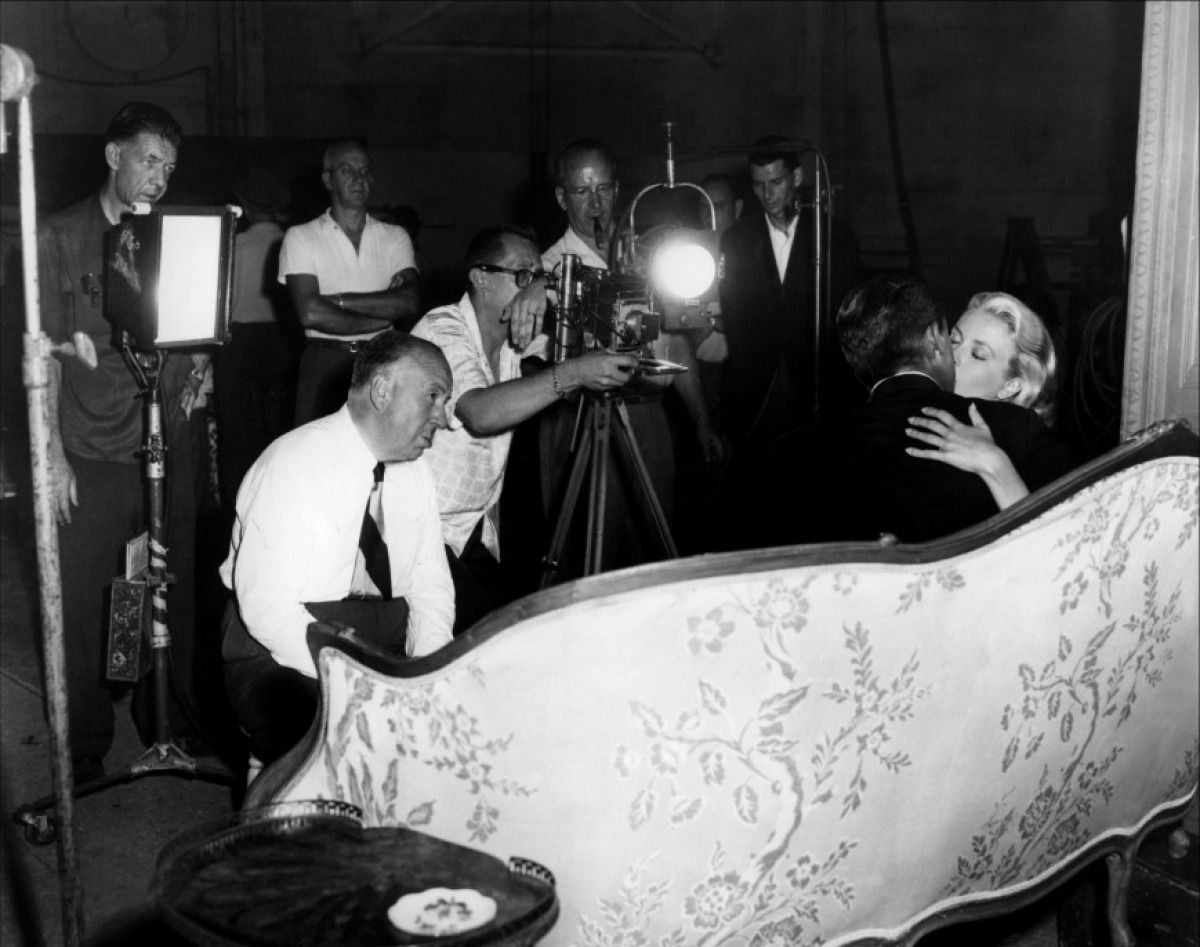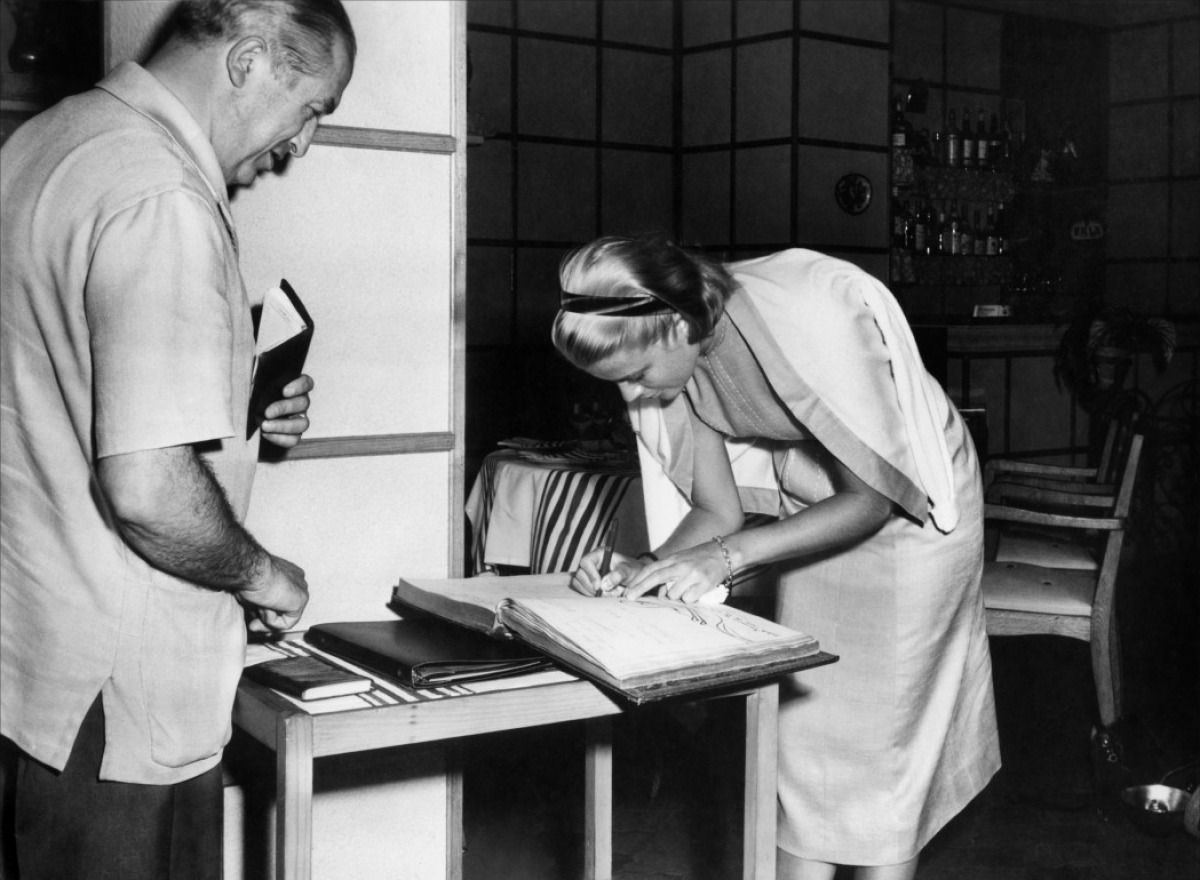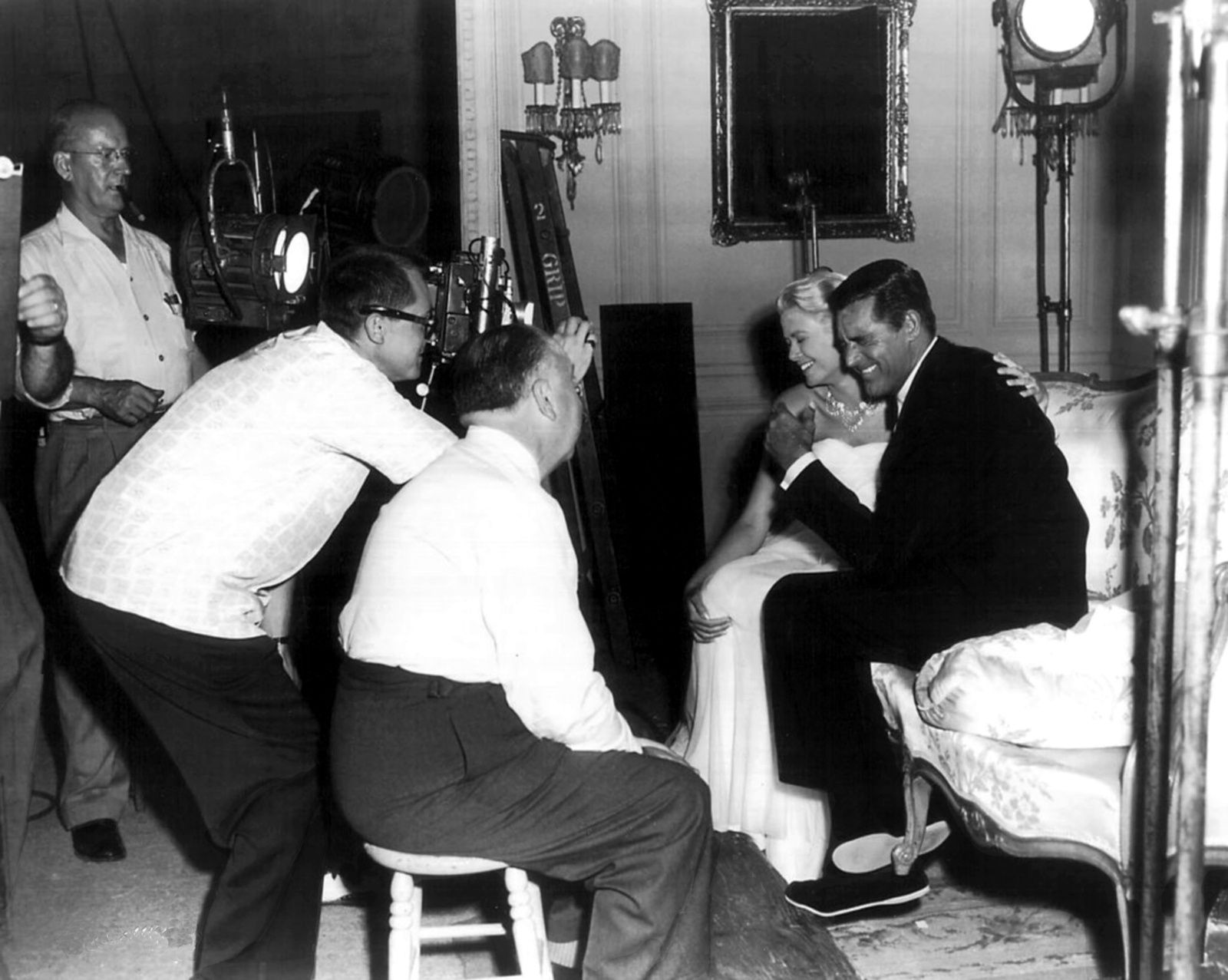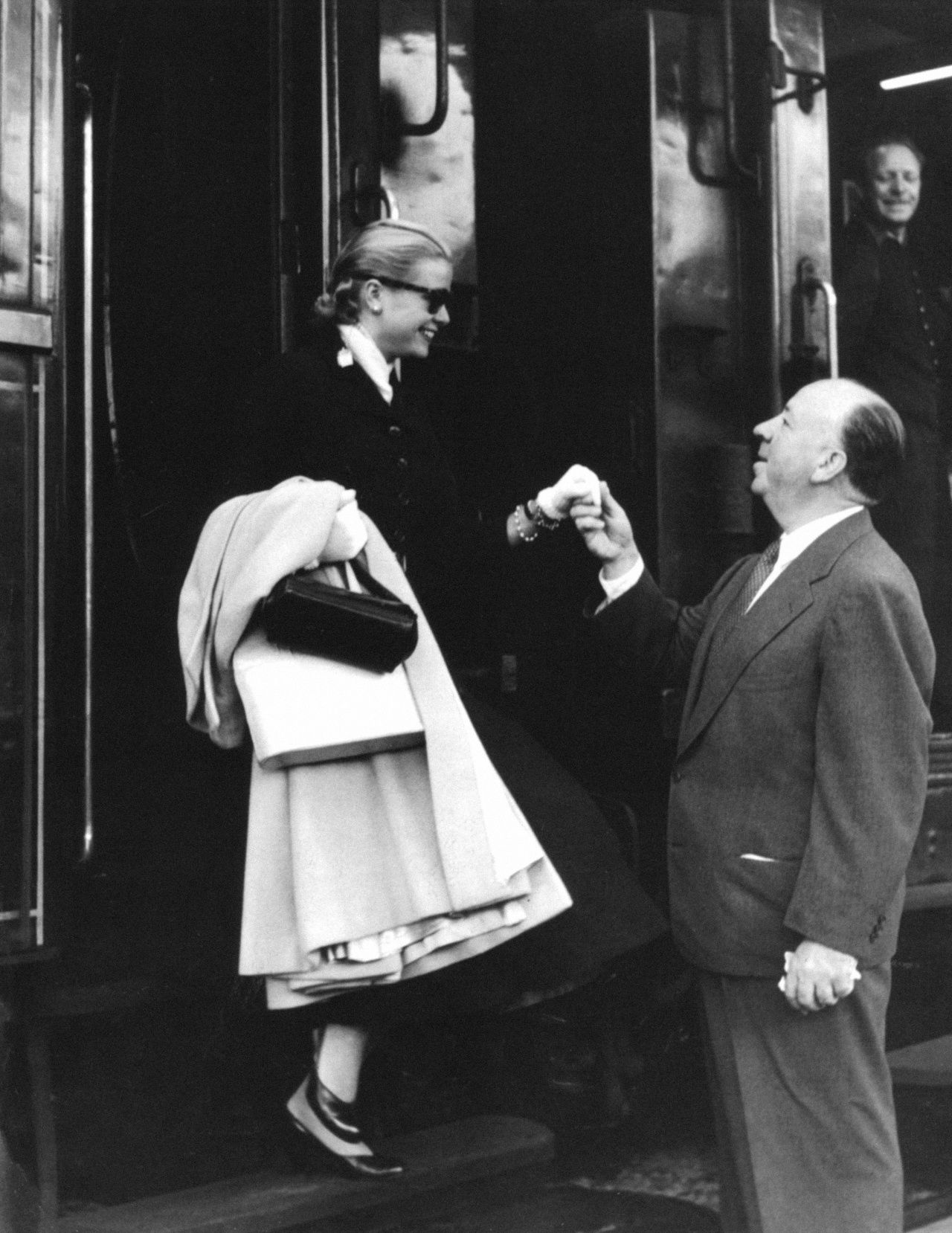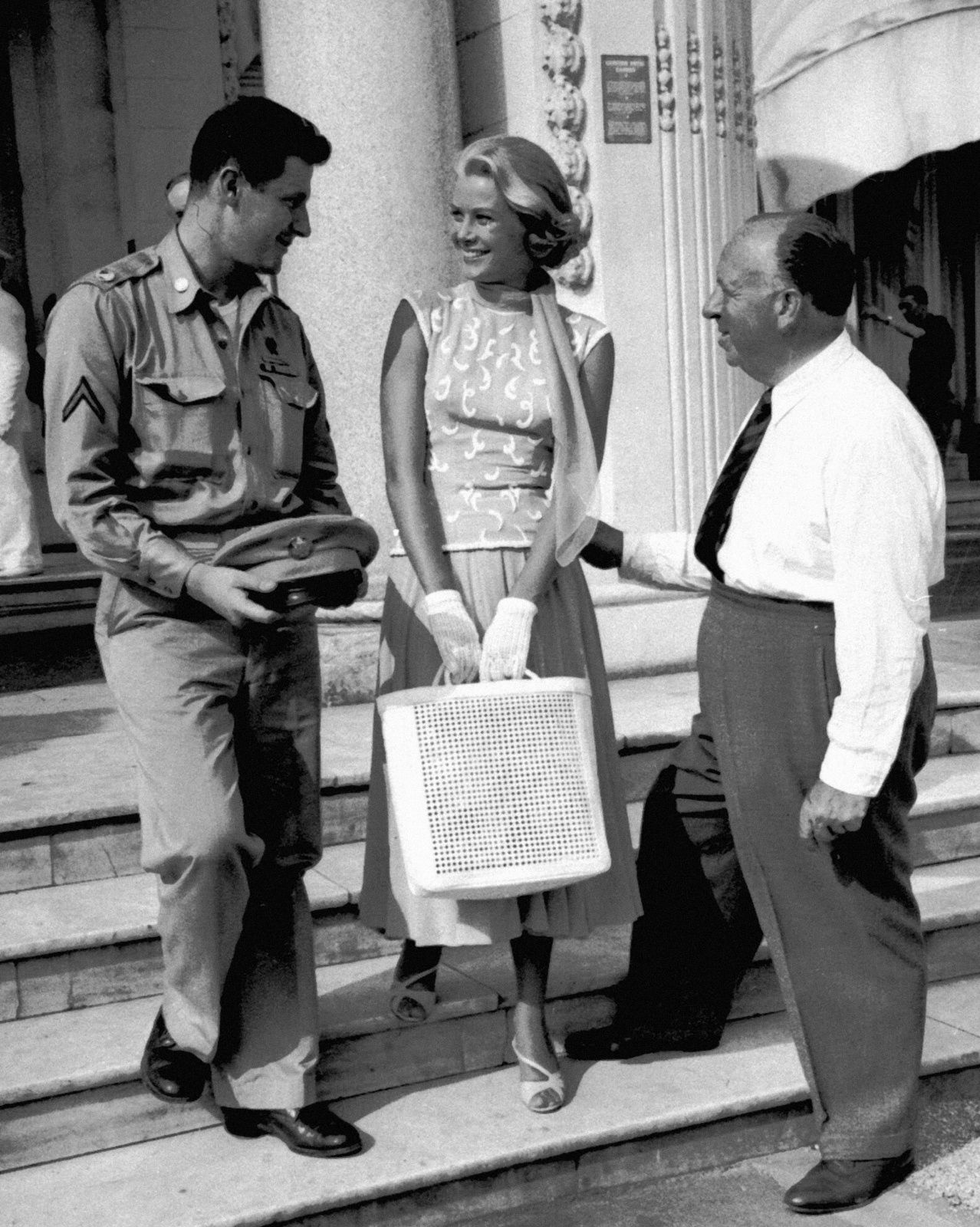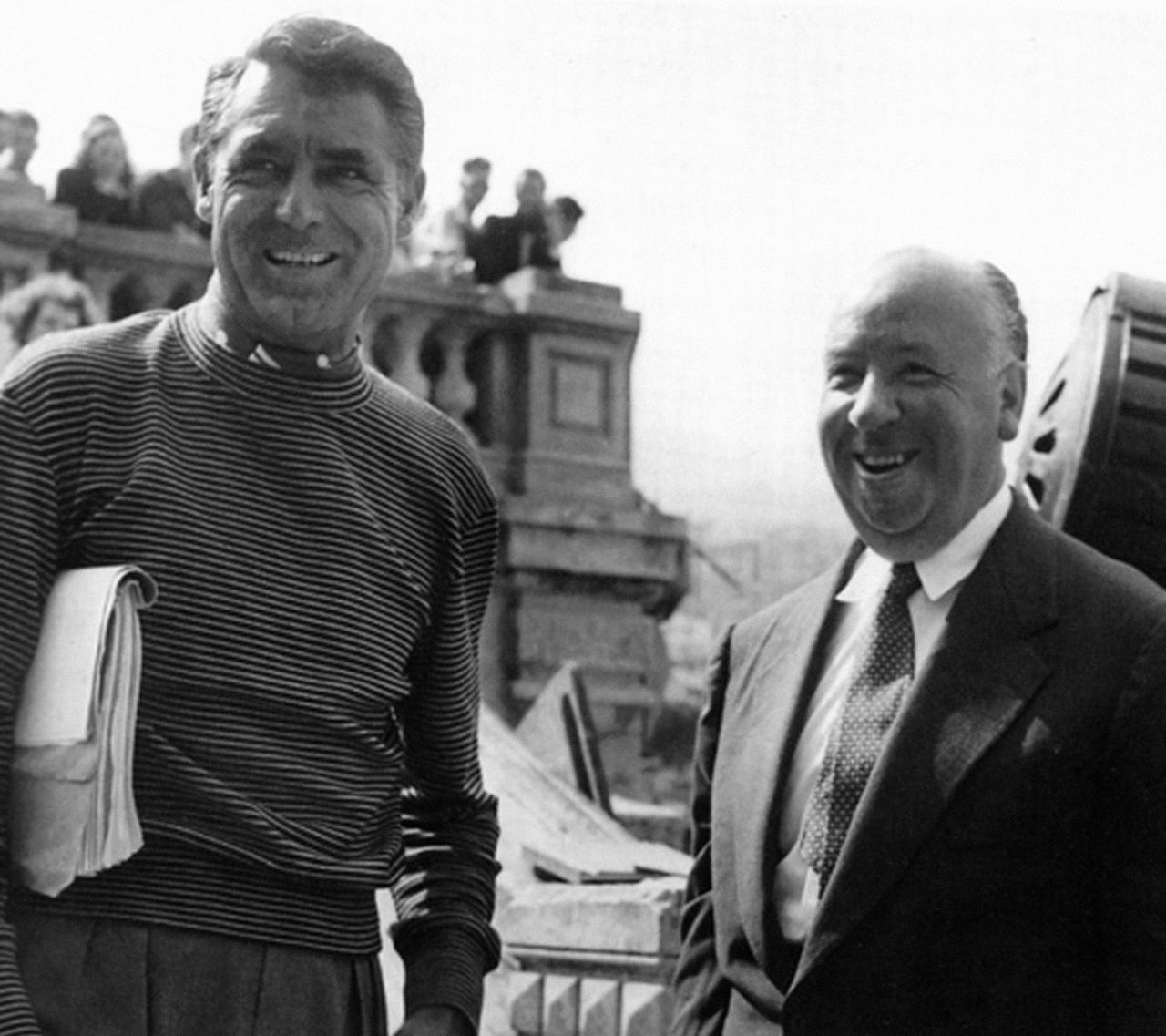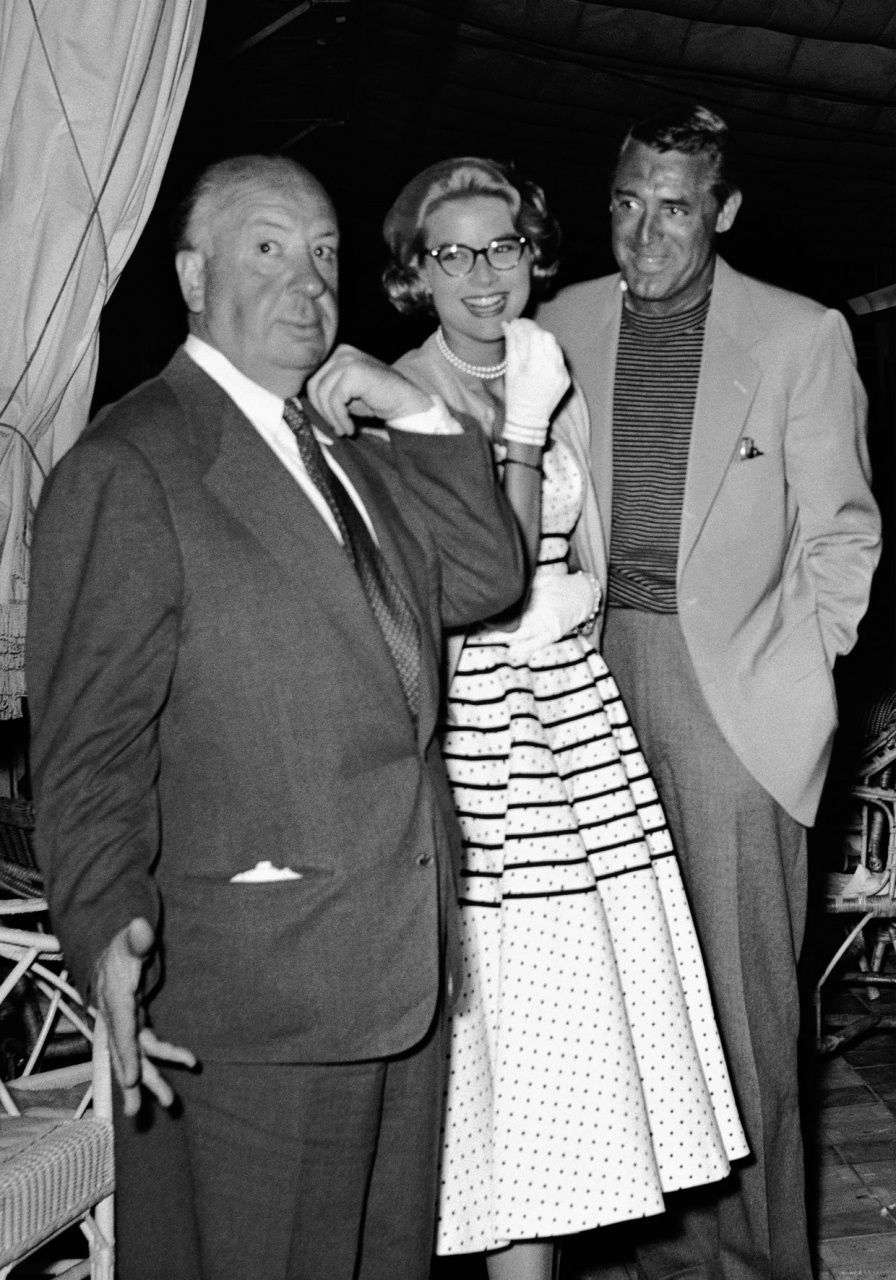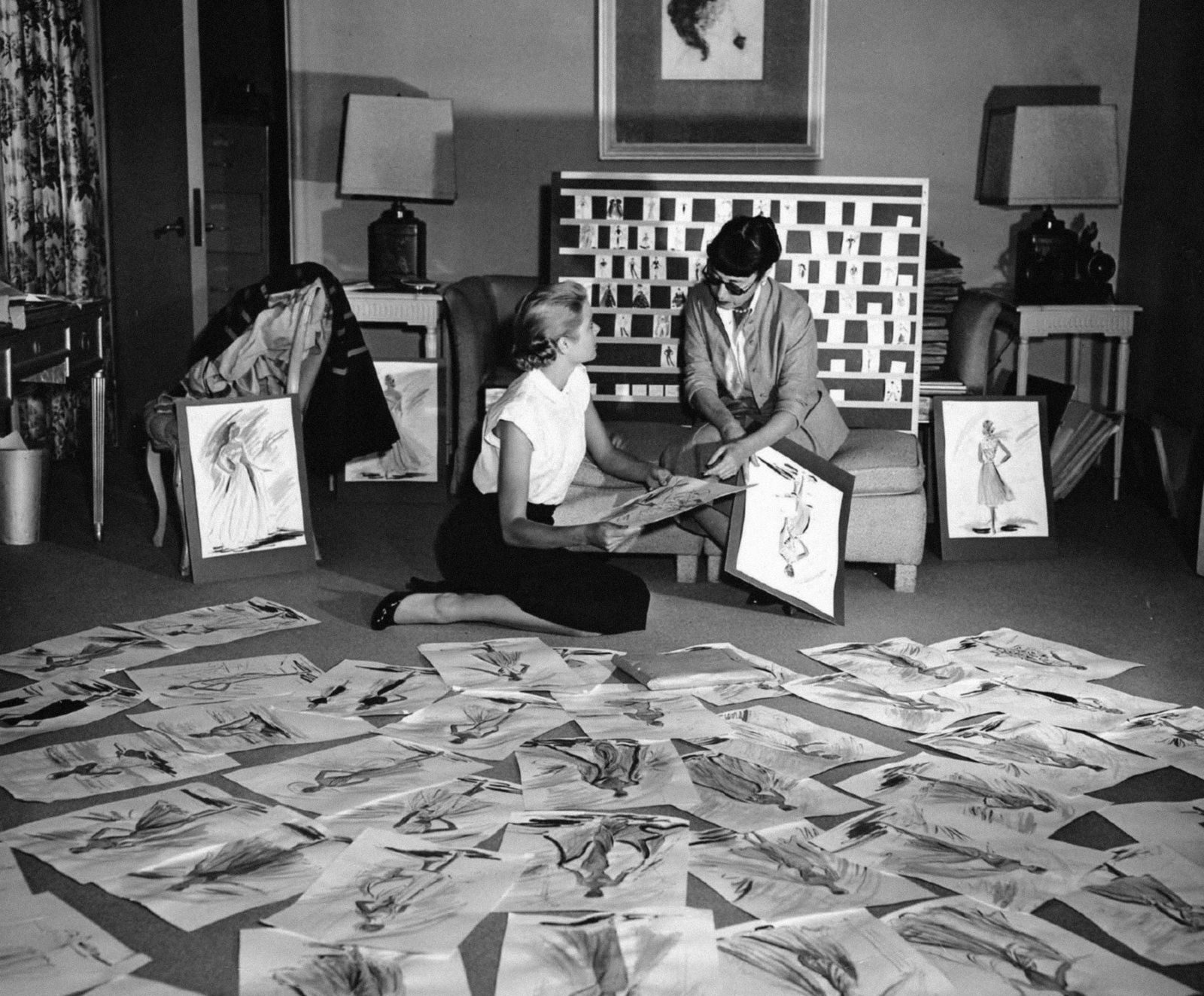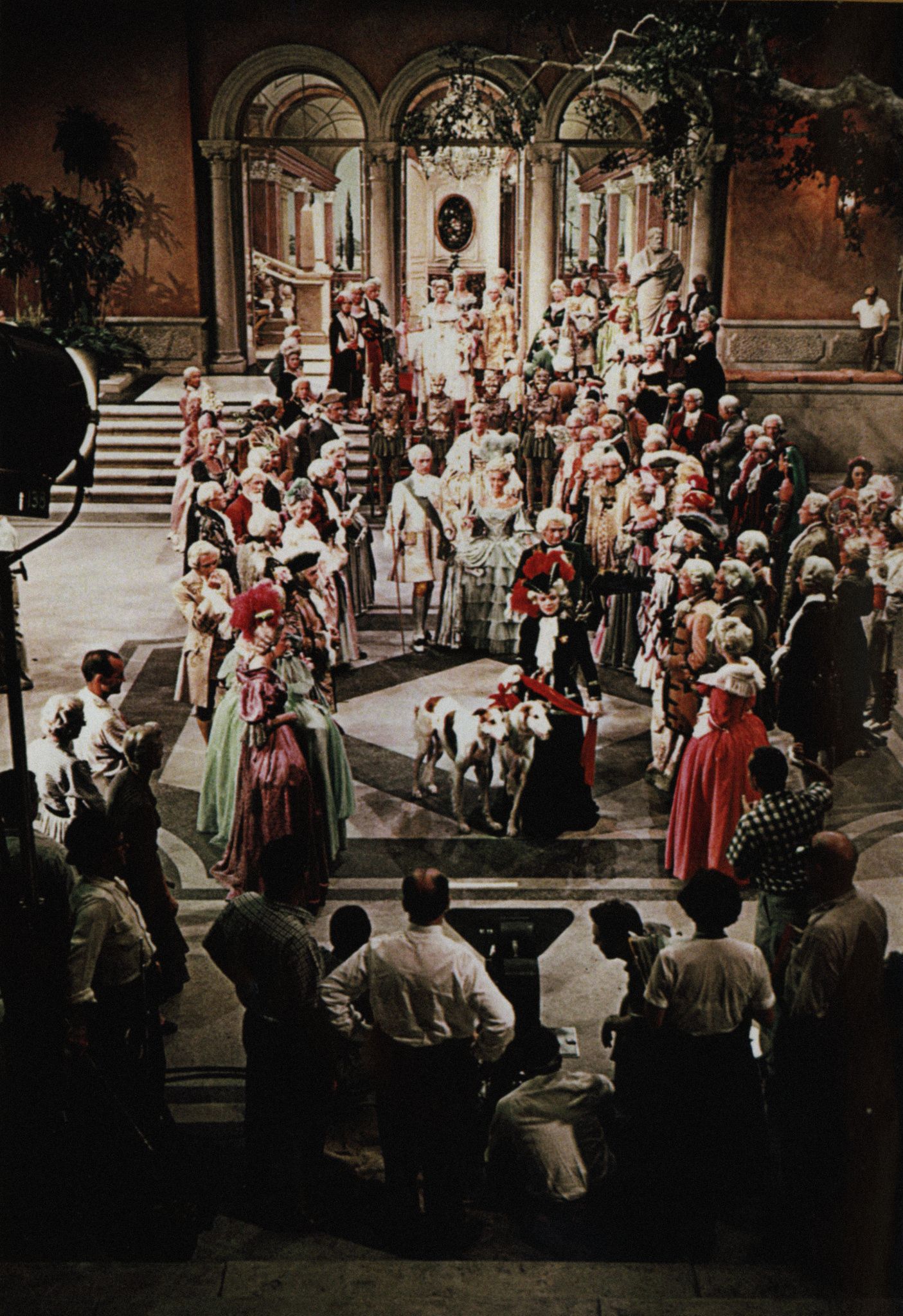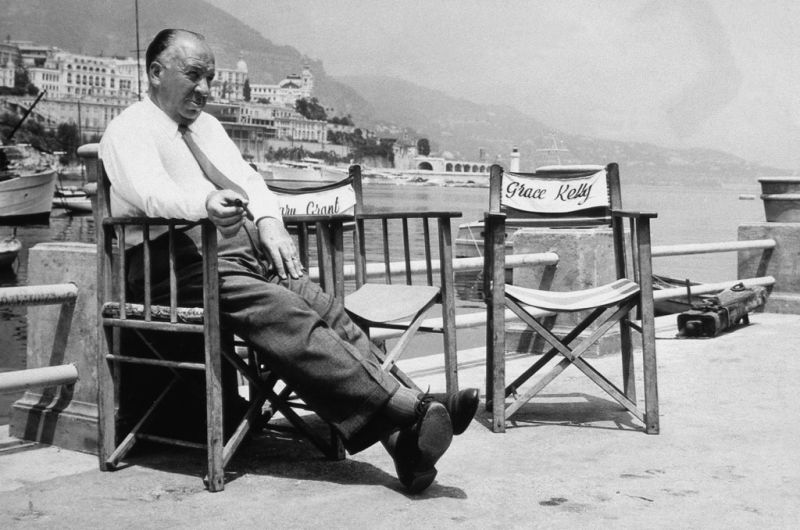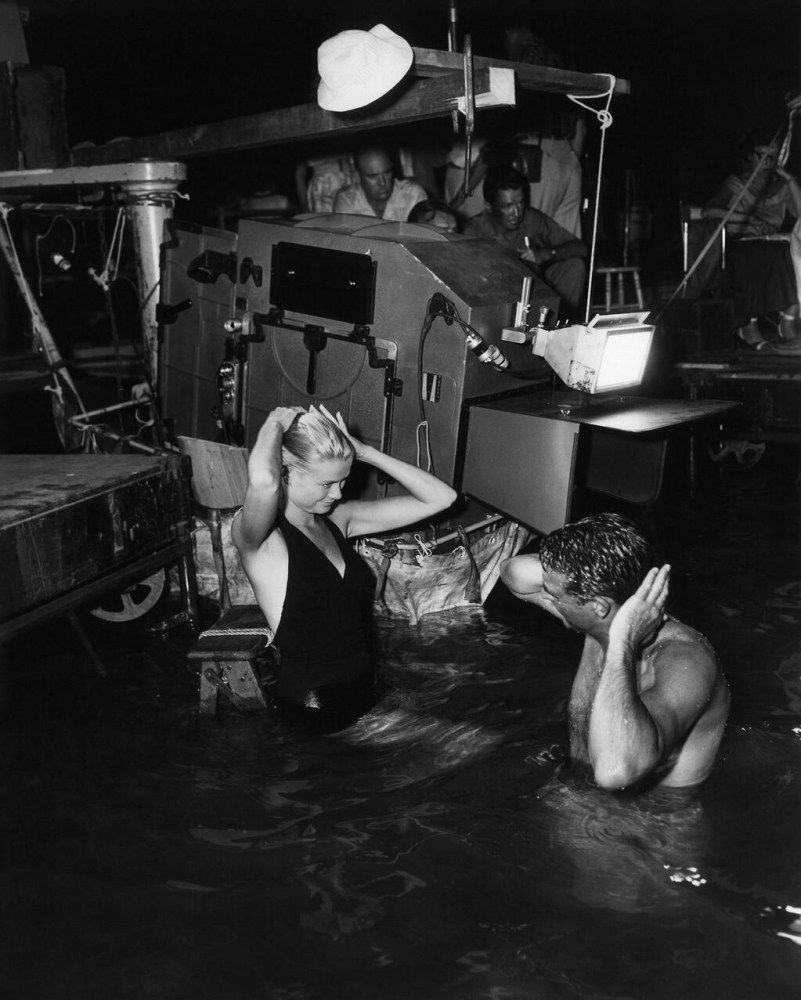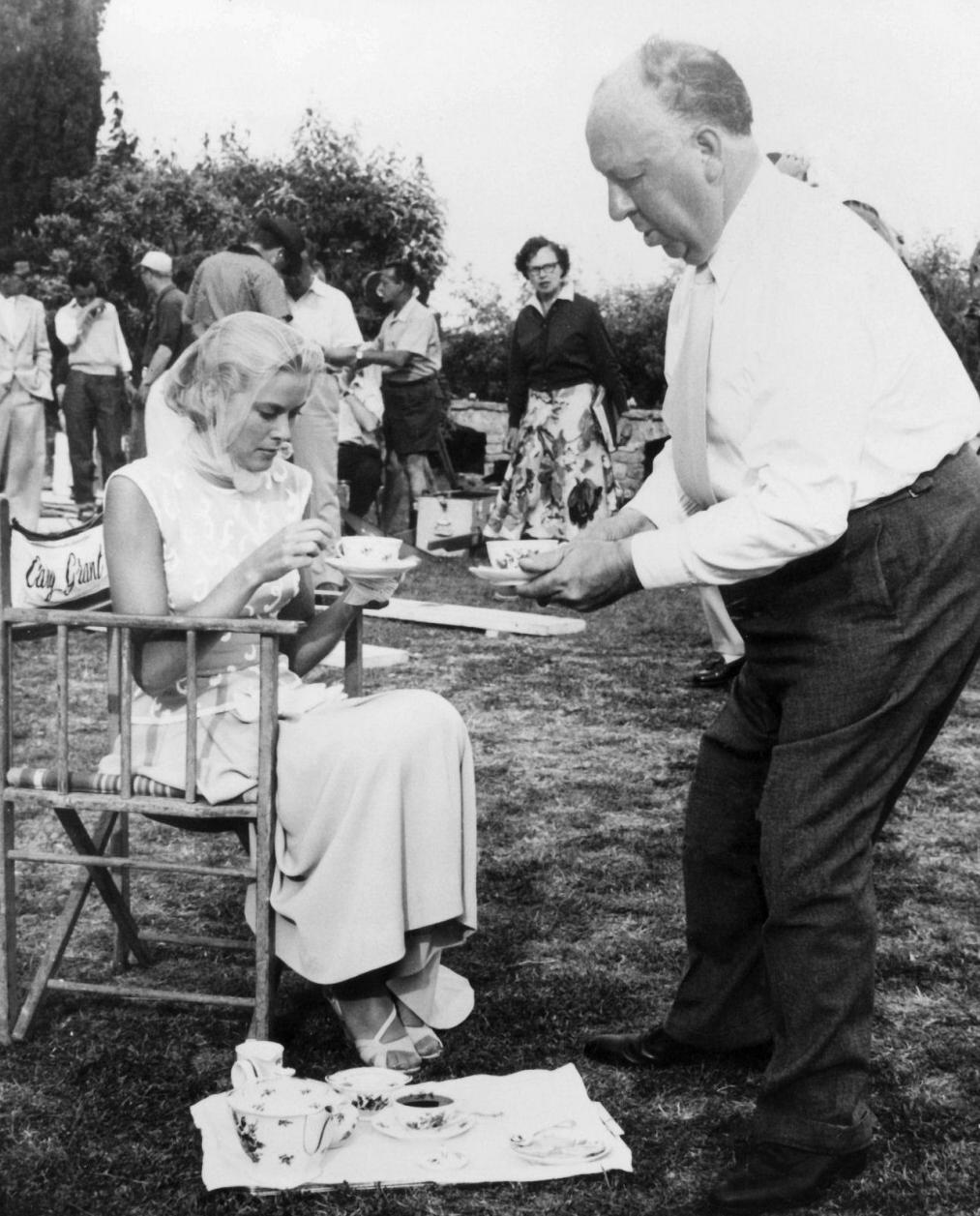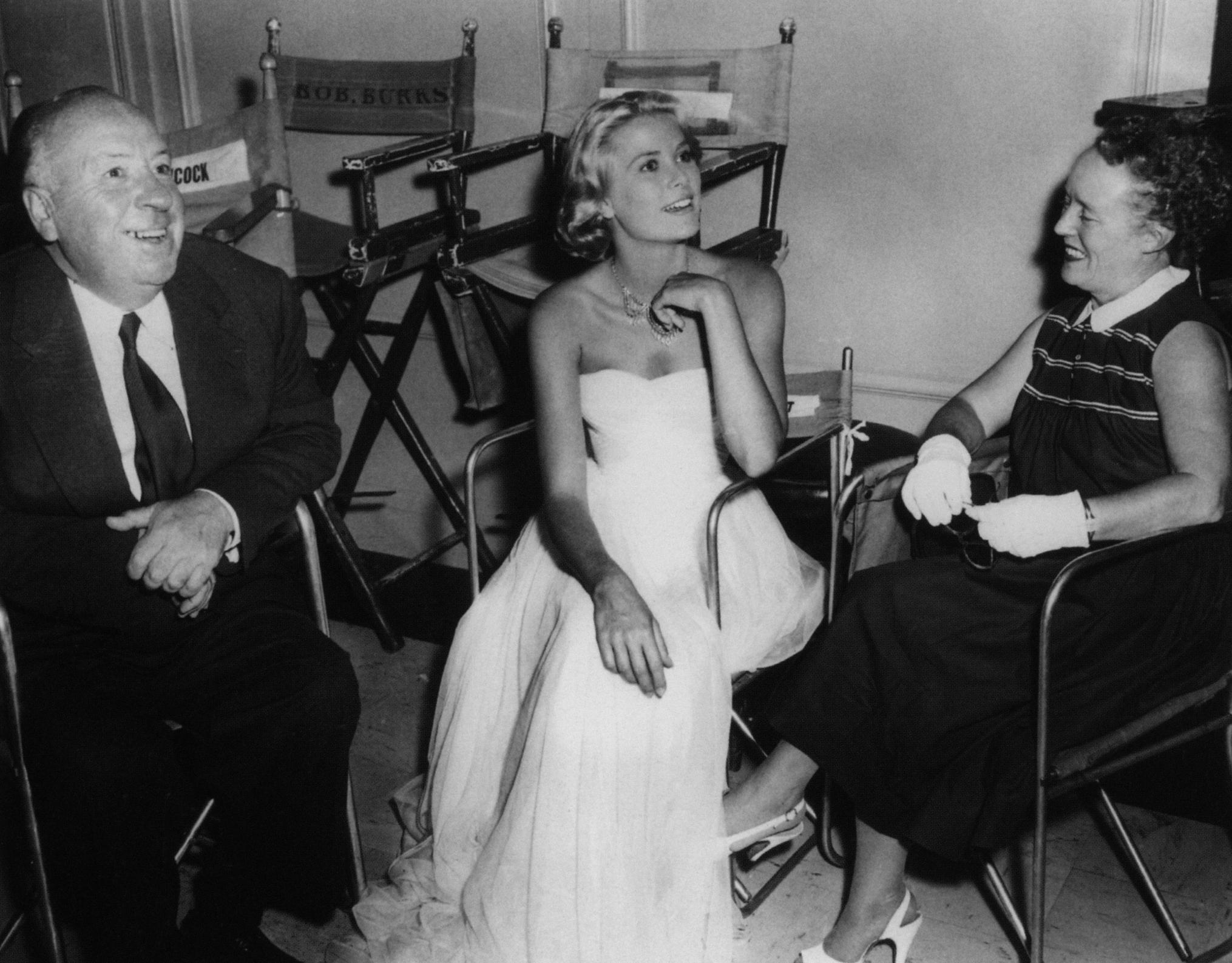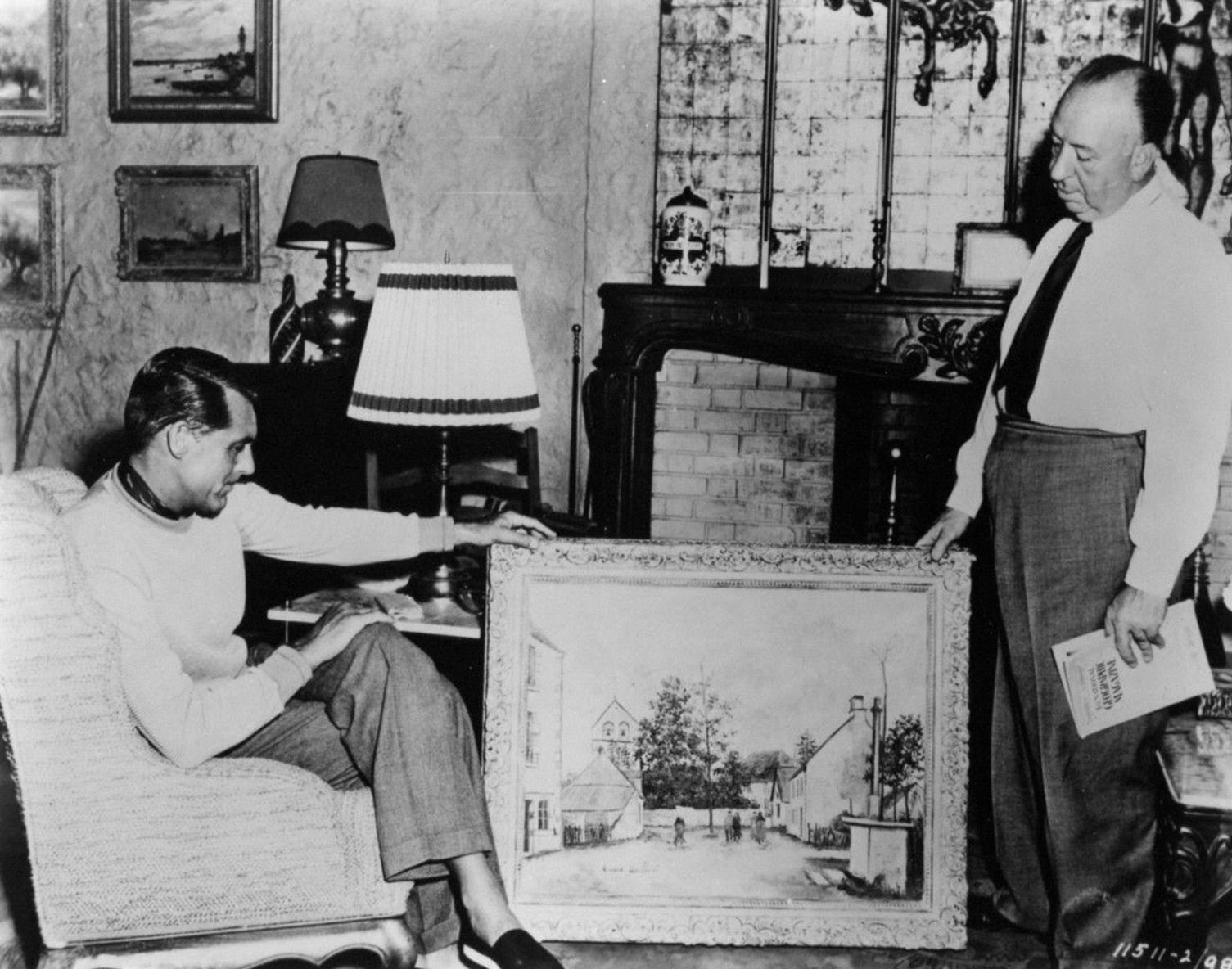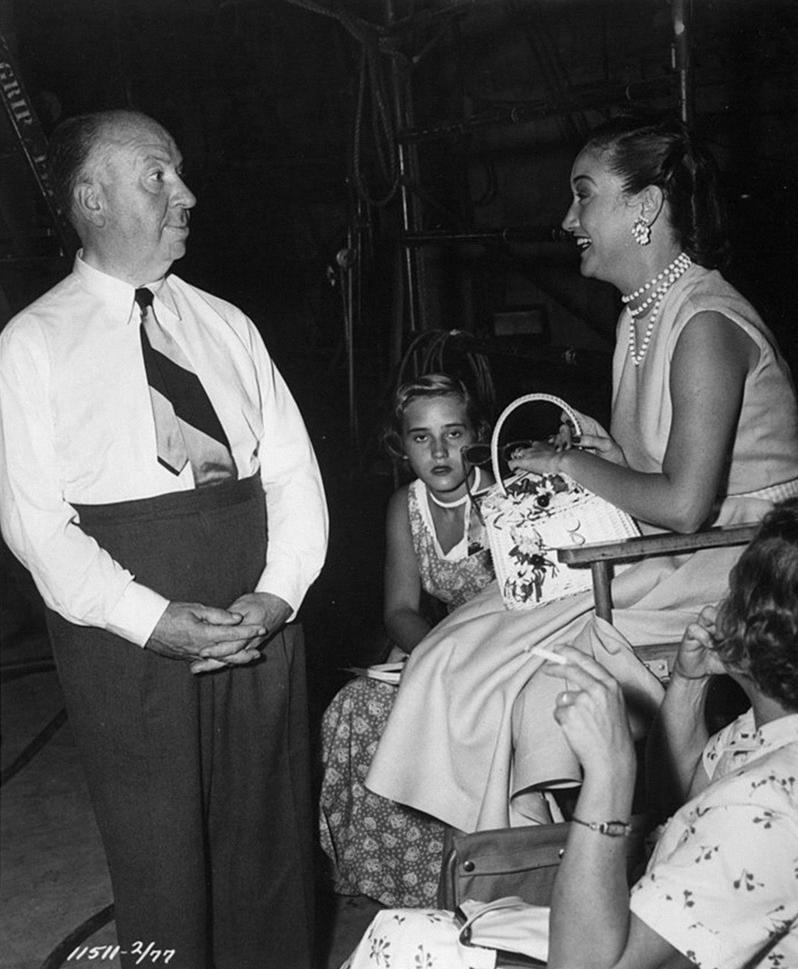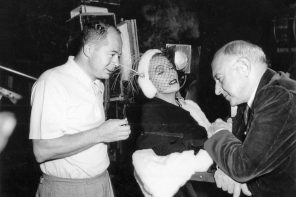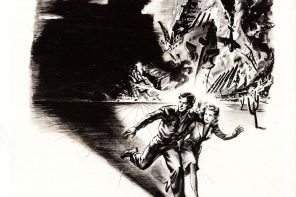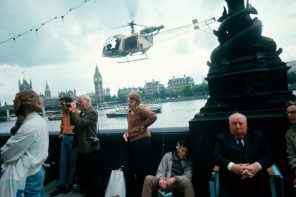By Sven Mikulec
The first out of five movies that Alfred Hitchcock made with VistaVision and his third and final collaboration with the magnificent Grace Kelly, To Catch a Thief is the master’s welcome and precious break from the phenomenal but somber thrillers that marked his career during the fifties. Set in the unbelievably charming Mediterranean landscape of the French Riviera, To Catch a Thief is a highly polished romantic thriller which tells the story of an experienced, masterful but retired burglar forced to catch the mysterious criminal molesting the insanely rich visitors of the Riviera. Cary Grant plays the charming protagonist whose shady history easily makes him the prime suspect for the French police, but if it wasn’t for the combination of three influential factors, we would hardly have the chance to see Grant in this picture. The star announced his retirement from acting, but simply couldn’t say no to Hitchcock’s invitation for dinner. Grant was allegedly intrigued by the story to some degree and reluctantly accepted to read the screenplay, but warned Hitchcock not to get his hopes up. It was then, at the end of dinner, that the old fox delivered the punch that destroyed Grant’s defenses, as he informed Grant on the two, seemingly casual pieces of information. The film is to be shot on the French Riviera, and Grace Kelly agreed to play the lead female role. Retirement, it seemed at that moment, was something that Grant could easily put on hold.
Adapted from a novel by David Dodge, written by John Michael Hayes, the man with whom Hitchcock worked on the brilliant Rear Window, shot with the Oscar-winning talents of the cinematographer Robert Burks and based on the dynamic, seductive interplay of the two classic Hollywood superstars under the spotlight, To Catch a Thief turned out to be a splendid eye-candy of an audience-pleaser. It even led to another Grant-Hitchcock collaboration a couple of years later, in North by Northwest. To much of Hitchcock’s disappointment, he failed in each and every attempt to lure Kelly back to Hollywood in the years that followed, since she moved to Monaco and married Prince Rainier, but this lovable cat-and-mouse story was indeed the final film the two of them made together. When talking about the numerous merits of one of Hitchcock’s most relaxed, least intense pictures, it would be a crime not to mention the work of the Oscar-nominated costume designer Edith Head, or the great composer Lyn Murray. But all in all, the main power of To Catch a Thief lies in its entertaining and clever writing, top-notch on-screen chemistry between Grant and Kelly, as well as the impressive visuals and breathtaking setting that contributed to the creation of a classic romantic flick that proves the versatility and talent of one of the greatest filmmakers in the history of cinema.
A monumentally important screenplay. Screenwriter must-read: John Michael Hayes’ screenplay for To Catch a Thief [PDF]. (NOTE: For educational and research purposes only). The DVD/Blu-ray of the film is available at Amazon and other online retailers. Absolutely our highest recommendation.
 Loading...
Loading...
WRITING AND CASTING ‘TO CATCH A THIEF’
Hitchcock had enjoyed working with John Michael Hayes on Rear Window and the screenwriter was hired to write To Catch a Thief towards the end of 1953. Whilst Rear Window was still post-production, Hitchcock arranged for Hayes and his wife to spend two weeks at the Hotel Carlton in Cannes researching the area in preparation for starting the screenplay. By February 23rd, Hayes and Hitchcock had completed a 9 page story outline. Four weeks later, Hayes had completed a first draft which ran to 212 pages and this was hastily translated into French in order to obtain the necessary filming permits and work permits for the American cast and crew. By the end of March, key contracts were in place and work on budgeting the film began.
During April, with the estimated budget approaching $3,000,000, Hitchcock cut out a costly street carnival scene and replaced it with a chase through a flower market. The script was finally completed at the start of May, although Hayes would be required to travel to Cannes with the cast and crew in order to do last-minute rewrites. In particular, the Production Code Administration had raised objections to several planed scenes. According to biographer Patrick McGilligan, tensions arose between Hayes and Hitchcock during location filming. Several times the director overruled changes the writer suggested only to discover Hayes had then gone behind his back and discussed them with Cary Grant and Grace Kelly to try and get their support. —The Hitchcock Zone
AN INTERVIEW WITH HITCHCOCK’S WRITER: JOHN MICHAEL HAYES
“His whole life was motion pictures; there didn’t seem to be much else in it. He just loved what he was doing, and he transmitted that feeling to you, rather than hovering over you like a giant genius. He was encouraging. He used to say, ‘It’s only a movie. Don’t worry about it, just do your best, and let the public decide.’ Hitch was humorous and relaxed on the set. We’d go to dinner or lunch, but in no sense was I his personal confidant. He used to go over his early pictures and tell me how he had solved problems. I think the worst fight we ever had was over the ending of To Catch a Thief. We had different ideas. I wrote twenty-seven different endings and still don’t like the one that was used. We had a couple of slam-bang script fights. Still, we got along fine until I got too much press. When we went to Paris for the premiere of To Catch a Thief, I was getting mentioned everywhere—they value writers in Paris—so I was promptly banned from all public relations events. If I was mentioned in the fourth paragraph of a story, that was okay but not in the first or second. I was becoming known for my dialogue and characterizations. They even talked about ‘the Hitchcock-Hayes fall schedule’ in either Variety or the Hollywood Reporter. When you show up in the same sentence—Alfred Hitchcock and John Michael Hayes—that was more than he could bear. He wanted to be the total creator: Alfred Hitchcock Presents. Hitch was so unkind about giving credit.” —How They Write A Script: John Michael Hayes
ALFRED HITCHCOCK AND PETER BOGDANOVICH (1963)
“Kelly is an American in the film, but she wasn’t frigid like the typical American woman who is a tease—dresses for sex and doesn’t give it. A man puts his hand on her and she runs screaming for mother immediately. The English women are the opposite of that. They are the best. They look like nothing—they look like school mistresses. Kelly is the English woman in that film. Outwardly, cold as ice, but, boy, underneath! And that was epitomized by the kiss in the corridor. Of course, the fireworks scene is pure orgasm. Just as the tunnel at the end of North by Northwest is a sexual symbol.
Wouldn’t Kelly prefer Grant were really guilty of the robberies?
Oh, of course, let’s put a mild word to it—it’s more piquant that way, more in the nature of her fetish.” —Alfred Hitchcock and Peter Bogdanovich
HITCHCOCK/TRUFFAUT
In the fall of 1962, whilst The Birds was in post-production, François Truffaut carried out extensive interviews with Alfred Hitchcock at his offices at Universal Studios. The interviews were recorded to audio tape and the content eventually edited down into the ‘Hitchcock/Truffaut’ book. Buy ‘Hitchcock by François Truffaut’ from Amazon. Hitchcock/Truffaut documentary explores the art and influence of Hitchcock through his famed 1962 interview with François Truffaut. Available on HBO NOW and HBO GO.
To Catch a Thief was the first film you shot on location in France. What do you think of the picture on the whole?
It was a lightweight story.Along the lines of the Arsene Lupin stories. Cary Grant played “The Cat,” a former high-class American thief who has retired on the Cote d’Azur. When the area is hit by a wave of jewel robberies, he is the logical suspect, both because of his police record and his expert skills. To resume his peaceful existence, he uses these skills to conduct his own investigation. Along the way he finds love, in the person of Grace Kelly, and in the end, it turns out that the guilty party is a “she-cat.”
It wasn’t meant to be taken seriously. The only interesting footnote I can add is that since I hate royal-blue skies, I tried to get rid of the Technicolor blue for the night scenes. So we shot with a green filter to get the dark slate blue, the real color of night, but it still didn’t come out as I wanted it.Like several of the others, the plot hinges around a transference of guilt, with the difference being that here the villain turns out to be a girl.
Brigitte Auber played that role. I had seen a Julien Duvivier picture called Sous Ie Ciel de Paris in which she played a country girl who’d come to live in the city. I chose her be cause the personage had to be sturdy enough to climb all over the villa roofs. At the time, I wasn’t aware that between films Brigitte Auber worked as an acrobat. That turned out to be a happy coincidence.This is the picture that aroused the press’s interest in your concept of movie heroines. You stated several times that Grace Kelly especially appealed to you because her sex appeal is “indirect.”
Sex on the screen should be suspenseful, I feel. If sex is too blatant or obvious, there’s no suspense. You know why I favor sophisticated blondes in my films? We’re after the drawing-room type, the real ladies, who become whores once they’re in the bedroom. Poor Marilyn Monroe had sex written all over her face, and Brigitte Bardot isn’t very subtle either.In other words, what intrigues you is the paradox between the inner fire and the cool surface.
Definitely, I think the most interesting women, sexually, are the English women. I feel that the English women, the Swedes, the northern Germans, and Scandinavians are a great deal more exciting than the Latin, the Italian, and the French women. Sex should not he advertised. An English girl, looking like a school teacher, is apt to get into a cab with you and, to your surprise, she’ll probably pull a man’s pants open.I appreciate your viewpoint, but I doubt whether the majority of the public shares your tastes in this matter. I think the male audience prefers a highly carnal woman. The very fact that Jane Russell, Marilyn Monroe, Sophia Loren, and Brigitte Bardot became stars, despite the many flops in which they appeared, seems to bear this out. The majority of the public, it seems to me, prefers the kind of sensuality that’s blatant.
That may well be true, but you yourself admit that those actresses generally make bad films. Do you know why? Because without the element of surprise the scenes become meaningless. There’s no possibility to discover sex. Look at the opening of To Catch a Thief I deliberately photographed Grace Kelly ice-cold and I kept cutting to her profile, looking classical, beautiful, and very distant. And then, when Cary Grant accompanies her to the door of her hotel room, what does she do? She thrusts her lips right up to his mouth.I’m willing to grant that you manage to impose that concept of icy sexuality on the screen, but I still feel the audience prefers the kind of sex that’s obviolls and tangible.
Maybe so. Anyway, when the picture is over, the public’s pretty satisfied with it.I’m not overlooking that, but my guess is that this is one aspect of your pictures that’s probably more satisfying to the feminine viewers than to the male audience.
I’d like to point out that it’s generally the woman who has the final sayan which picture a couple is going to see. In fact, it’s generally the woman who will decide, later on, whether it was a good or a bad picture. On condition that it’s not displayed by a person of their own sex, women will not object to vulgarity on the screen. Anyway, to build up Grace Kelly, in each picture between Dial M for Murder and To Catch a Thief we made her role a more interesting one. Since To Catch a Thief is in a rather nostalgic mood, I didn’t want to wind up with a completely happy ending. That’s why I put in that scene by the tree, when Cary Grant agrees to marry Grace Kelly. It turns out that the mother-in-law will come and live with them, so the final note is pretty grim.
“I DEAL IN NIGHTMARES AND NIGHTMARES
HAVE TO BE AWFULLY VIVID”
A 1966 interview with Alfred Hitchcock on filmmaking, simplification of identification, visual clarity, actors and improvisation, the Hitchcock-woman, humour of the macabre, being a traditionalist, making television, suspense and more.
THE SOUND OF HITCHCOCK
Join Academy Award-winning sound designers as they reveal how Alfred Hitchcock employed sound to make audience members leap from their seats in fright or crawl under them from excruciating suspense.
PURE CINEMA: THROUGH THE EYES OF HITCHCOCK
Director Martin Scorsese is our guide into the power and mastery of Hitchcock’s visual style, breaking down landmark sequences from Vertigo, The Birds and Psycho.
IN THE MASTER’S SHADOW: HITCHCOCK’S LEGACY
Martin Scorsese, Guillermo del Toro, William Friedkin and many others celebrate the enduring legacy of the man many consider the greatest filmmaker the medium has yet produced. Discover why Alfred Hitchcock’s movies thrill audiences and inspire filmmakers, who continue to employ his cinematic techniques to this day.
‘A TALK WITH HITCHCOCK’
Alfred Hitchcock takes us inside his creative process in this fascinating 1964 program from the Canadian Broadcasting Corporation. This interview of Hitchcock was part of the CBC television series Telescope with host-director Fletcher Markle. It was conducted during or immediately after the filming of Marnie and also contains interesting stories and comments from Hitchcock and his associates Norman Lloyd, Joan Harrison and Bernard Herrmann. There are clips from and during the making of several Hitchcock movies. Enjoy the master of suspense!
Here are several photos taken behind-the-scenes during production of Alfred Hitchcock’s To Catch a Thief. Still photographers: Bill Avery & Bud Fraker. © Paramount Pictures. Intended for editorial use only. All material for educational and noncommercial purposes only.
If you find Cinephilia & Beyond useful and inspiring, please consider making a small donation. Your generosity preserves film knowledge for future generations. To donate, please visit our donation page, or donate directly below:
Get Cinephilia & Beyond in your inbox by signing in
[newsletter]

